People go to izakayas primarily to drink, but alcohol needs food to dance the night away. Izakaya food is mostly side dishes or snacks, similar to tapas, coming in small sizes and many varieties. Japanese establishments often like to specialize in a few signature items, so patrons know what to expect. Naturally, izakayas tend to have a few expected crowd-please items on the menu, and here are the most popular ones across the board.
1. Tsukemono pickles つけもの
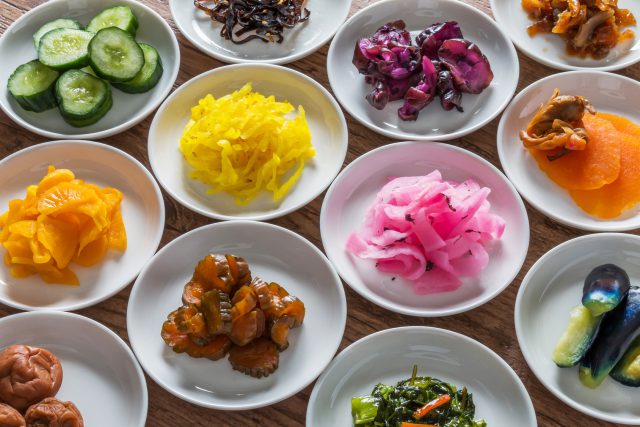
Hands down, the best side dish that is the friend of any kind of alcohol. Nihonshu sake drinkers swear that they must have some tsukemono to accompany it. Tsukemono is basically anything pickled, with the most popular vegetables being cucumber and daikon. Bear in mind that Japanese pickling marinades have their own distinctive flavors, so you’re not getting classic gherkins here. Tsukemono vegetables are often pickled for a short time so they retain their crunch and the marinade is not overpowering. There’s simple tsukemono, chili flakes tsukemono, miso and bran tsukemono, and so on.
2. Edamame 枝豆
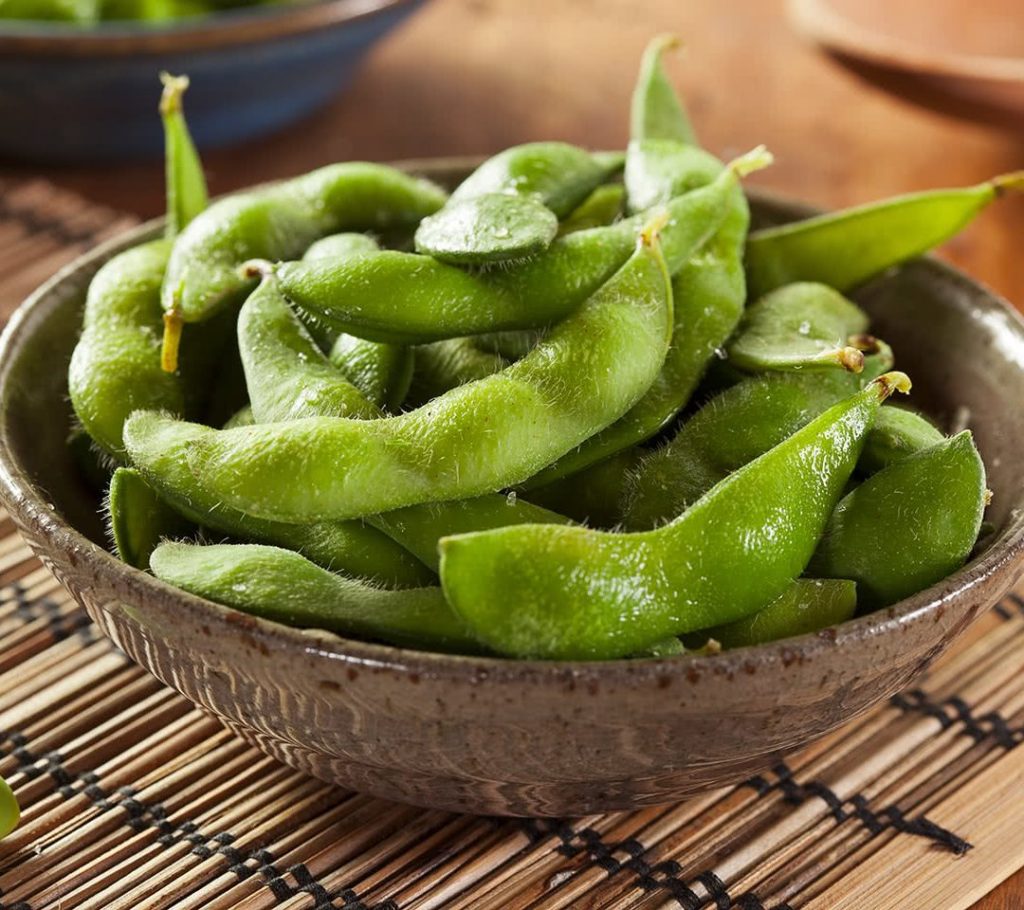
Often found in Japanese restaurants abroad, edamame soybeans are a great healthy snack. Usually heated up and sprinkled with coarse salt, they are served in their pods so you can pop them out one by one like the tastiest bubble wrap with a prize for every green bubble popped. They are a staple in Japanese izakayas too, served both heated and chilled, with or without salt on top (sometimes boiled in saltwater), steamed, deep-fried, and at times served even while still attached to a branch! They are touted as a great beer snack, but you can have them with anything you want.
3. Yakitori skewers 焼き鳥
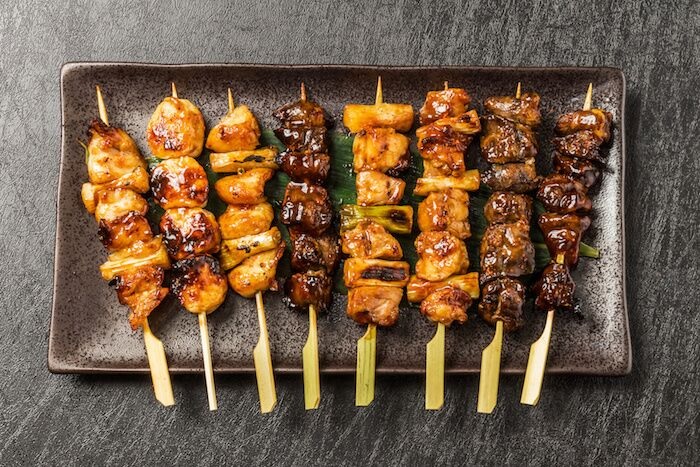
These skewers have become almost a symbol of the izakaya establishment. To not have them on the menu would be like a burger shop not having any burgers. As the name suggests, they are usually grilled chicken skewers – ‘yaki’ means to grill and ‘tori’ means chicken. The whole chicken is used as much as possible, so apart from chicken tenders, there are also chicken skin skewers, internal organs skewers, even cartilage only skewers. So better make sure which part of the bird you’re ordering.
Izakayas usually have at least two basic seasonings for the skewers – salt or tare (a soy sauce based marinade). There are also chicken skewers with veggies like leek and pepper. Despite the name, other meats end up on the skewer too – beef, pork, sometimes duck. If you are an omnivore, you can often ask the izakaya to serve you a plate of mixed yakitori and get a bite of everything.
4. Karaage chicken 唐揚げ
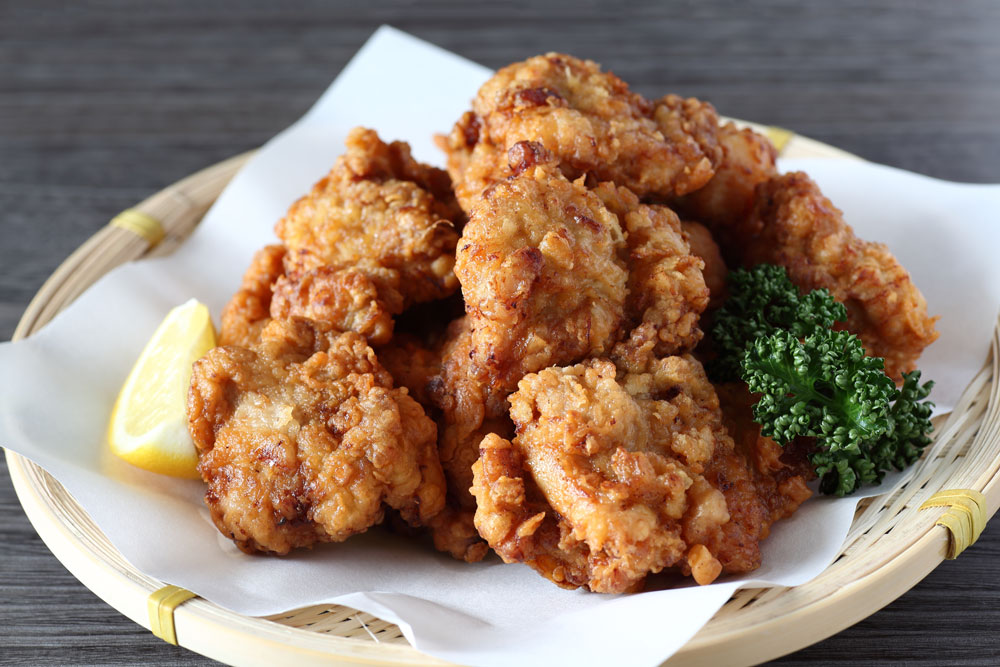
Karaage is a mouth-watering izakaya superstar, as well as a fixture in school cafeterias and home cooking. It’s basically breaded fried chicken, similar to popcorn chicken. The pieces are bite-sized, crunchy and crispy on the outside and juicy inside. The chicken is usually thigh meat with bits of skin left on, slightly marinated, then coated in flour and cornstarch or potato starch, and finally deep-fried in oil – twice. It’s usually served with salt and lemon that cuts through the oiliness of karaage. It surely is one of the best versions of fried chicken in the world!
5. Tofu in Various Shapes and Forms
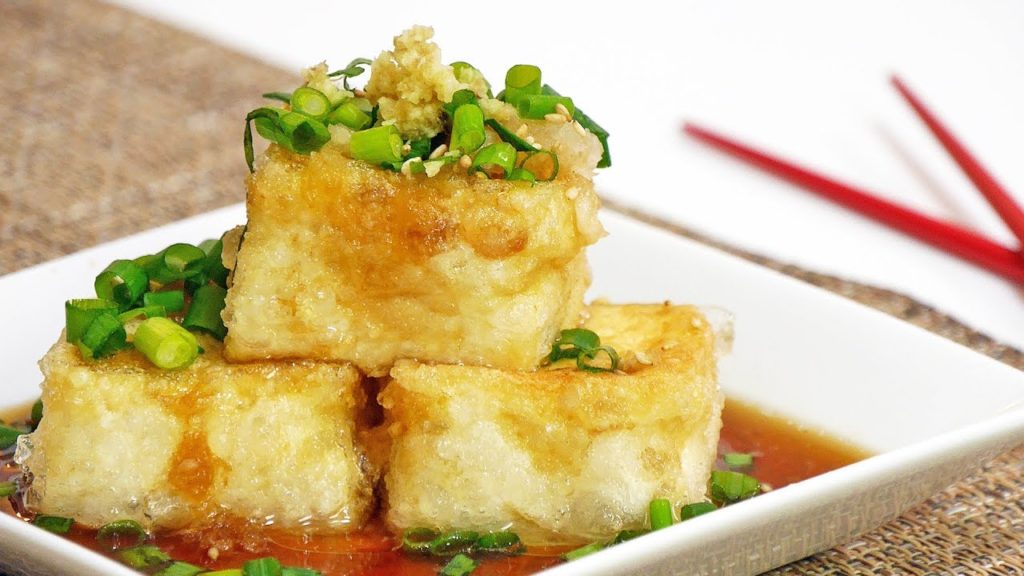
If you think tofu is bland, chances are you haven’t really had good tofu or well-prepared tofu. It’s a popular side-dish in Japan, and most izakayas will have tofu prepared in one of a myriad ways. ‘Hiyashi tofu’ is chilled silky tofu topped with soy, bonito flakes and freshly chopped scallions. It can be found in most izakayas, and its popularity soars in summer.
Then there’s ‘agedashi tofu’ – deep-fried firm tofu that results in crispy skin and soft center, served in tsuyu broth with toppings like grated daikon and bonito flakes. Besides these two beloved dishes, tofu is often a major ingredient in soups, stews, and hot-pots, so whatever has tofu is bound to be tasty. Give it a try.
6. Potato salad ポテトサラダ
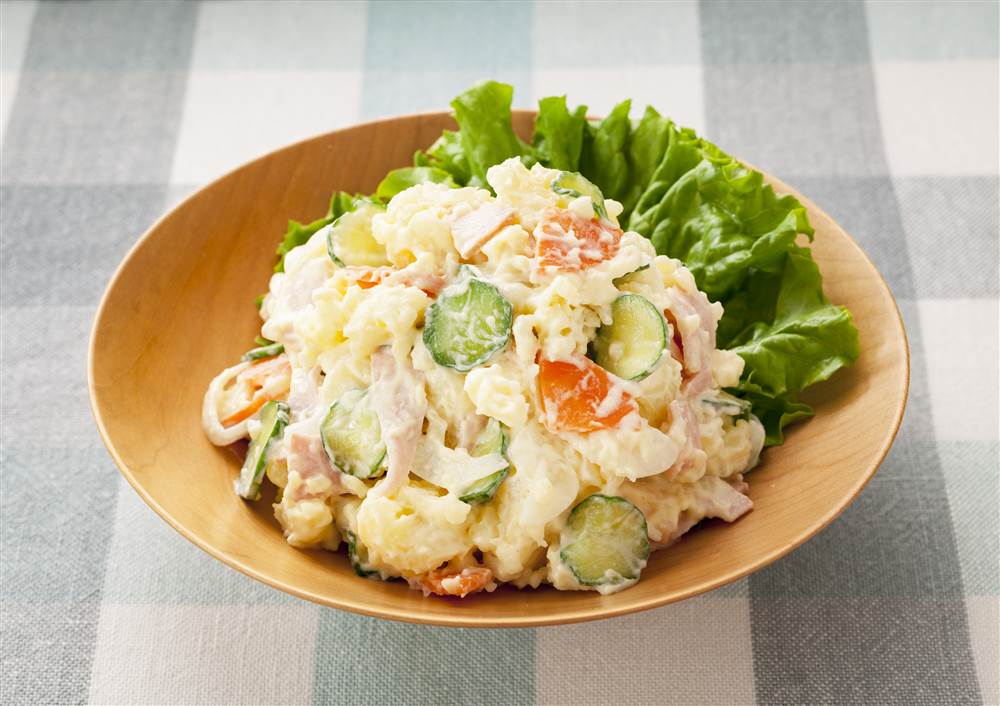
They often say in Japan that if you want to know if an izakaya is any good, try their potato salad first. It’s been explained to me that potato salad seems not that important of a dish, so if it’s tasty it means they really cook everything well at that establishment. Japanese potato salad differs a bit from the potato salad you might know and love. First of all, the potatoes are a mix of mash and chunky bits, with fresh and crunchy cucumbers, boiled carrots, ham, and mayonnaise. Other ingredients can vary, but those are the basics.
So if you find yourself in a Japanese izakaya, order the potato salad – it’s the low-risk dish that everyone will love. Sometimes, even the most adventurous eaters need a break too, so it’s comforting to have some potato salad in between all the fun and new food you’ve been sampling.

For non-adventurous eaters, Japanese izakayas almost always have french fries, which they call ‘potato fries’/’fried potato’ (ポテトフライ) served with ketchup and mayo. There’s also fresh cabbage salad with minimal dressing like a few drops of sesame oil, and fresh cut tomatoes, for a simple safe choice of a side dish.
Of course, not all izakayas are copies of each other, so in addition to these much-loved dishes, they will surely have rarer items on the menu. Grilled onigiri rice balls, peppers stuffed with minced chicken, sour plum sauce, stir-fried noodles, sashimi, even pizza and ice cream! Then there’s also izakayas that specialize in seafood, and izakayas that offer regional cuisines from all over Japan. If you go to an Okinawan izakaya you can find unique delicacies like bitter gourd goya, so-called ‘sea grapes’ umibudou, and so on.
So, dive in and try everything you can. And if you don’t like it, at least it was small and cheap, so no huge loss.




Loading…